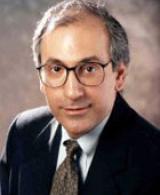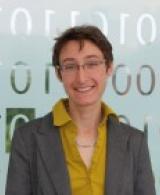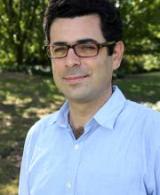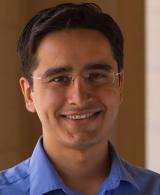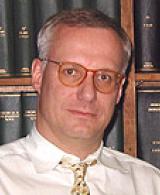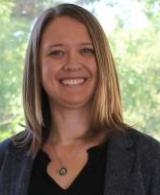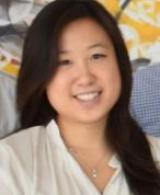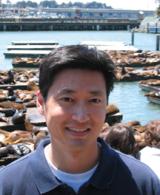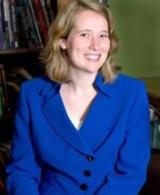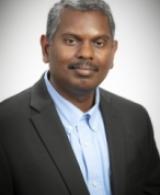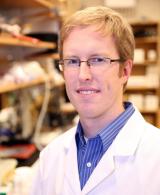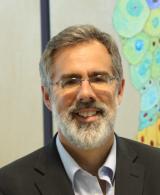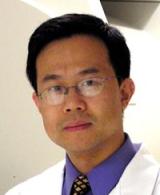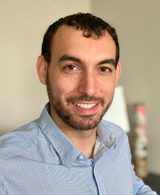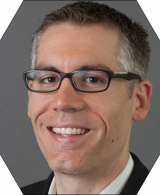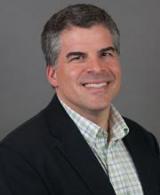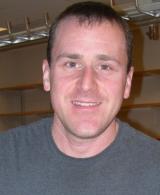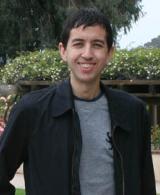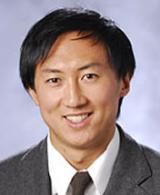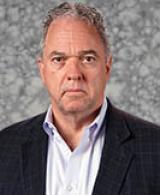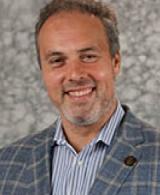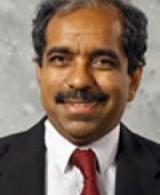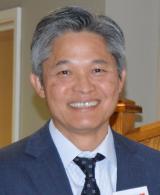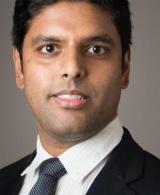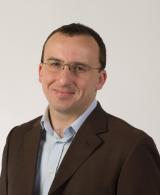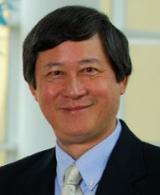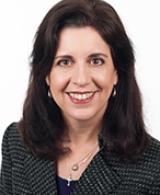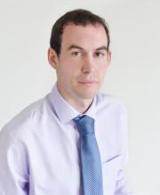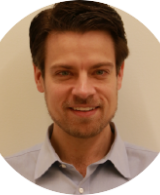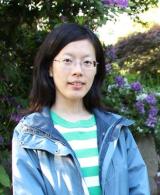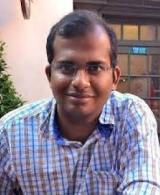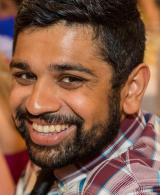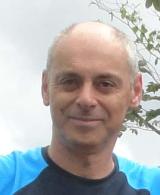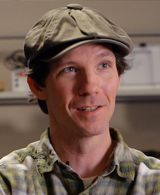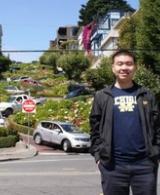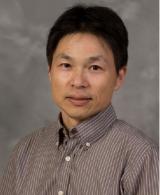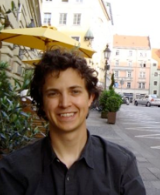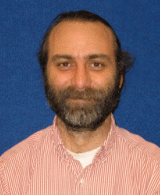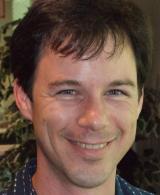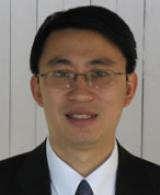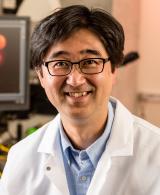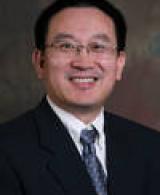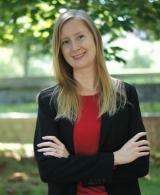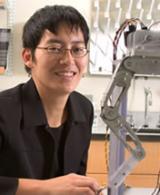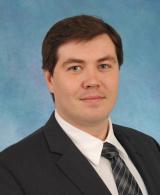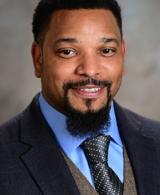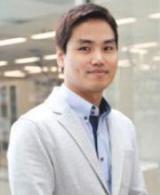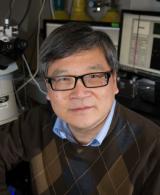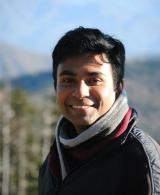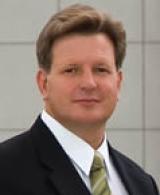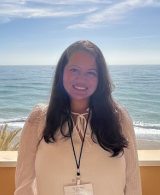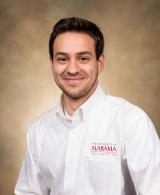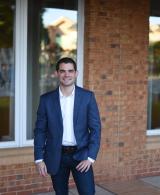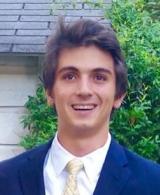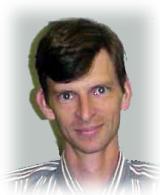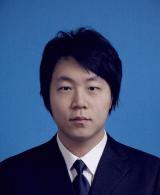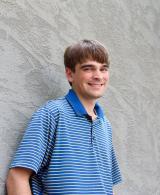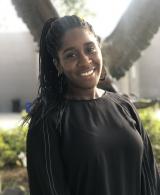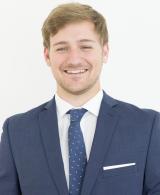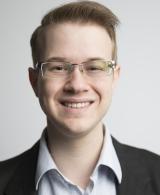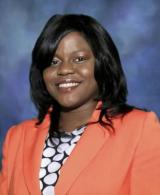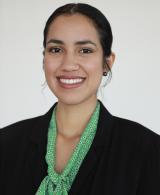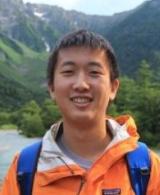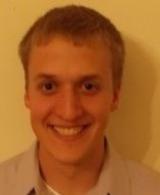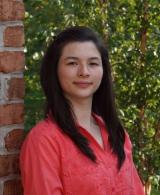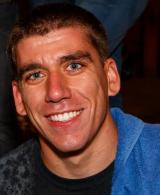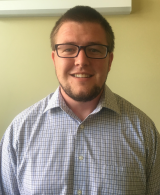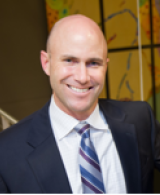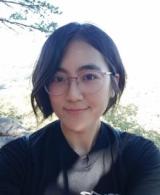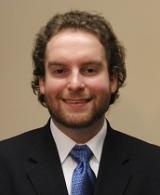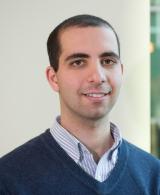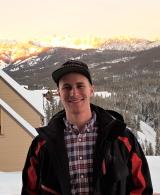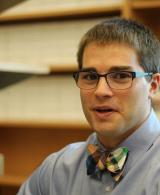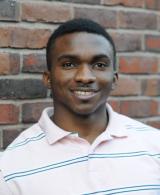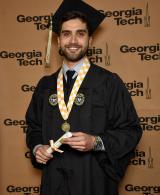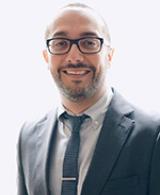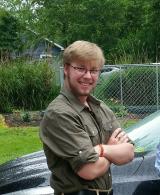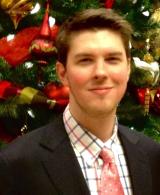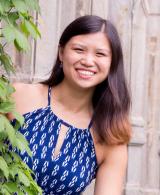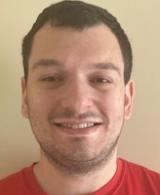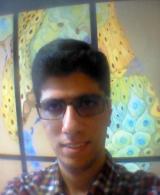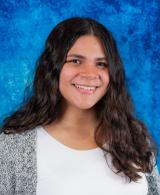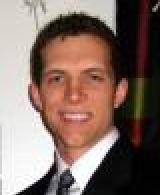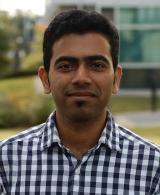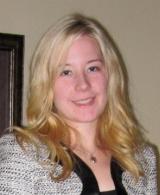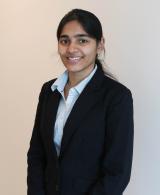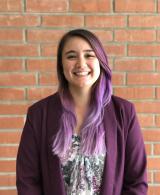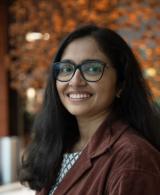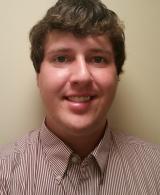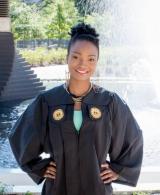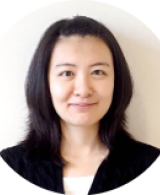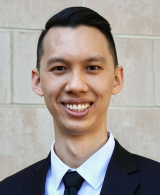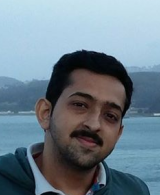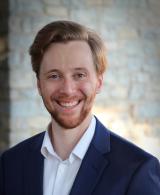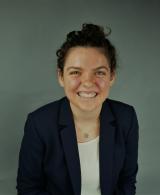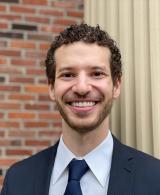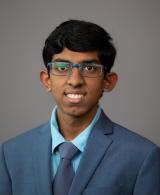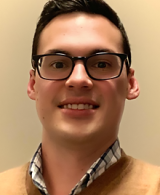Biomechanics is the application of mechanical principles to biological systems, such as humans, animals, plants, organs and cells. Biomechanics is closely related to engineering, because it often uses traditional engineering sciences to analyse biological systems. Some simple applications of Newtonian mechanics and/or materials sciences can supply correct approximations to the mechanics of many biological systems. Applied mechanics, most notably mechanical engineering disciplines such as continuum mechanics, mechanism analysis, structural analysis, kinematics and dynamics play prominent roles in the study of biomechanics.
Biomechanics
Professor
Associate Professor,
Constitutive Modeling: damage and healing in rock, influence of microstructure on macroscopic rock properties, thermo-hydro-chemo-mechanical couplings in porous media Numerical Modeling: Finite Element code development in laboratory-owned programs (in Fortran), implementation of new subroutines in commercial software (ANSYS, ABAQUS, PFC3D), algorithms for the validation and calibration of damage models (MATLAB) Geomechanical Applications: deep geological storage (nuclear waste disposals, carbon dioxide sequestration, high-pressure gas storage), shallow geothermal systems, hydraulic fracturing, ground improvement by jet-grouting, scour and erosion, ballast particle crushing Other Applications: retention properties of cracked cement paste, strength properties of damaged teeth repaired by resin injection
Associate Professor
Therapeutic applications of ultrasound: Costas Arvanitis’ research investigates the therapeutic applications of ultrasound with an emphasis on brain cancer, and central nervous system disease and disorders. His research is focused on understanding the biological effects of ultrasound and acoustically induced microbubble oscillations (acoustic cavitation) and using them to study complex biological systems, such as the neurovascular network and the tumor microenvironment, with the goal of developing novel therapies for the treatment of cancer and central nervous system diseases and disorders.
Assistant Professor
Professor
Development of novel biocatalysts Investigation and enhancement of protein stability Data-driven protein engineering
Associate Professor
Blair's current research interests focus on rational design of functional advanced materials through understanding of interactions in multicomponent mixtures on the molecular scale, both at equilibrium and during processing. Her research group designs and studies new processing and characterization technologies using both experiments and theory, focusing on linking molecular to micron scale phenomena in complex systems to product performance. Application areas include pharmaceutical product development, renewable bioproducts and polymer composites.
Assistant Professor
Professor
Dr. Chang is the director of the Comparative Neuromechanics Laboratory in the School of Applied Physiology. His research program focuses on trying to understand how animals move through and interact with their environment. He integrates approaches and techniques from both biomechanics and neurophysiology to elucidate both passive mechanical and active neural mechanisms that control limbed locomotion in humans and other terrestrial vertebrates. This multidisciplinary approach allows him to test hypotheses about the basic design and function of the locomotor apparatus throughout a variety of conditions. His current goal is to understand the extent to which muscular reflexes can influence limb coordination during locomotion and how global limb control strategies may be affected by sensorimotor perturbations.
Associate Professor
Cell biophysics. Cell mechanics of adhesion, migration and dynamics. Immunophysics and immunoengineering. Hyaluronan glycobiology. Hyaluronan synthase. Physics of tissues. The Curtis lab is primarily focused on the physics of cell-cell and cell-extracellular matrix interactions, in particular within the context of glycobiology and immunobiology. Our newest projects focus on questions of collective and single cell migration in vitro and in vivo; immunophage therapy "an immunoengineering approach - that uses combined defense of immune cells plus viruses (phage) to overcome bacterial infections"; and the study of the molecular biophysics and biomaterials applications of the incredible enzyme, hyaluronan synthase. A few common scientific themes emerge frequently in our projects: biophysics at interfaces, the use of quantitative modeling, collective interactions of cells and/or molecules, cell mechanics, cell motility and adhesion, and in many cases, the role of bulky sugars in facilitating cell integration and rearrangements in tissues.
Professor
Professor
Bioengineering: lymphatics, lipid metabolism, biomechanics, biomedical optics, image processing, and tissue engineering.
Professor
My research area is biomechanics and mechanobiology with focus on: Glaucoma, including studies of aqueous humour drainage, optic nerve head biomechanics, and stem cell therapies in glaucoma; and Mechanobiology of osteoarthritis.
Associate Professor, Georgia Cancer Coalition Distinguished Scholar, Director, Quantitative BioImaging Laboratory (QBIL)
Associate Professor
Neuroengineering, ultra-high throughput genomics instrumentation; detection, separation, amplification of DNA; 3-D microfabrication technologies for genomics applications; and micro-lenslet arrays.
Executive Director, Parker H. Petit Institute for Bioengineering and Bioscience, Regents' Professor, George W. Woodruff School of Mechanical Engineering
Biomolecular, cellular, and tissue engineering strategies to direct cell function for biomaterial and regenerative medicine applications.
Professor
Research integrates my work in complex fluids and granular media and the biomechanics of locomotion of organisms and robots to address problems in nonequilibrium systems that involve interaction of matter with complex media.
Associate Professor
Computational simulations of complex biophysical phenomena involving proteins and other biomolecules.
Professor
My research interests focus on image-based computational design and 3D biomaterial printing for patient specific devices and regenerative medicine, with specific interests in pediatric applications. Clinical application interests include airway reconstruction and tissue engineering, structural heart defects, craniofacial and facial plastics, orthopaedics, and gastrointestinal reconstruction. We specifically utilize patient image data as a foundation to for multiscale design of devices, reconstructive implants and regenerative medicine porous scaffolds. We are also interested in multiscale computational simulation of how devices and implants mechanically interact with patient designs, combining these simulations with experimental measures of tissue mechanics. We then transfer these designs to both laser sintering and nozzle based platforms to build devices from a wide range of biomaterials. Subsequently, we are interested in combining these 3D printed biomaterial platforms with biologics for patient specific regenerative medicine solutions to tissue reconstruction.
Associate Professor
Fluid Mechanics: Fluid dynamics, solid mechanics, biomechanics, locomotion, and physical applied mathematics. Dr. David Hu's research focuses on fundamental problems of hydrodynamics and elasticity that have bearing on problems in biology. He is interested in the dynamics of interfaces, specifically those associated with fluid-solid and solid-solid interactions. The techniques used in his work include theory, computation, and experiment. He is also interested in pursuing biomimetic technologies based on nature's designs.
Professor,
Thin film piezoelectric materials SAW and BAW devices for wireless applications Application of microelectronic acoustics to chemical sensing and biological research Device physics and fabrication of microelectronic acoustic devices
Associate Professor
Medical devices for clinically-relevant applications Non-invasive physiological monitoring Home monitoring of chronic disease Cardiomechanical signals Medical instrumentation Dr. Inan is generally interested in designing clinically relevant medical devices and systems, and translating them from the lab to patient care applications. One strong focus of his research is in developing new technologies for monitoring chronic diseases at home, such as heart failure.
Professor,
Dr. Jacob's research is directed at stress induced phase changes, nanoscale characterization of materials, synthesis of polymeric nanofibers, mechanical behavior of fiber assemblies (particularly related to biological systems and biomimitic systems), nanoparticle reinforced composites, transdermal drug delivery systems, large scale deformation of rubbery (networked) polymers, and nanoscale fracture of materials. The objectives in this work, using theoretical, computational and experimental techniques, is to understand the effect of micro- and nano- structures in the behavior of materials in order to try to design the micro/nano structures for specific materials response.
Wallace H. Coulter Distinguished Professor Chair
Vascular Mechanobiology and Nanomedicine, Role of mechanosensitive genes, miRNAs and epigenetics in atherosclerosis, RNA-based therapeutics, nanomedicine, and endothelial mechanobiology.
Director of Translational Clinical Informatics
Assistant Professor
Professor
Our laboratory focuses on the smallest organisms on the planet, the bacteria and the archaea, which represent the largest reservoir of biodiversity on Earth, drive the life-sustaining biogeochemical cycles, and cause or control diseases in humans, animals, and plants. Our scientific interests are at the interface of microbial ecology with engineering and computational biology. The long-term goals of our research is to broaden understanding of the genetic and metabolic diversity of the microorganisms and to explore this biodiversity for biotechnological applications.
Regents' Professor
Bioengineering, fluid mechanics, biofluid mechanics, medical devices, medical implants, translational technology, and entrepreneurship.
Associate Professor
Traumatic brain and spinal cord injury, Neural tissue engineering, Injury biomechanics, Neural interfacing, and Cognitive impairment associated with brain injury and aging.
Assistant Professor
The focus of our research is the mechanics of hearing. In order to improve our fundamental understanding of the biophysics of hearing, we develop multiphysics computational models of the mammalian ear and simulate the response of the inner ear (cochlea) and middle ear to sounds as well as the emission of sounds by the ear (otoacoustic emissions). This research could result in better diagnostic tools for hearing pathologies and in new treatments and devices that restore hearing.
Associate Professor
Dr. Oshinski is well known for his collaborative efforts between Emory and Georgia Tech's Department of Biomedical Engineering, along with his dedication to advancing the technologies of MR imaging. One area of concentration is the development of Cardiovascular MRI for clinical and basic science applications. Dr. Oshinski has worked on development of the contrast-enhanced MRA and phase-contrast MR for rapid assessment of the aorta and the peripheral runoff vessels. He also Implemented SSFP cine imaging for rapid breath-hold assessment of cardiac function, IR recovery sequences for myocardial perfusion imaging, and creating a protocol for using MR coronary angiography to diagnose the proximal course of the coronary arteries.
Associate Professor of surgery & BME
Assistant Professor
Professor
The major research focus of my research is on biomechanics and motor control of locomotion and reaching movements in normal as well as in neurological and musculoskeletal pathological conditions. In particular, we study the mechanisms of sensorimotor adaptation to novel motor task requirements caused by visual impairament, peripheral nerve or spinal cord injury, and amputation. We also investigate how motor practice and sensory information affect selections of adaptive motor strategies.
Associate Professor
Assistant Professor
Associate Professor
Physiological and biomechanical mechanisms underlying fine motor skills and their adjustments and adaptations to heightened sympathetic nerve activity, aging or inactivity, space flight or microgravity, neuromuscular fatigue, divided attention, and practice in humans. He uses state-of-the-art techniques in neuroscience, physiology, and biomechanics (e.g., TMS, EEG, fMRI, single motor unit recordings, microneurography, mechanomyography, ultrasound elastography, and exoskeleton robot) in identifying these mechanisms.
Professor
Applied research and device development targeting the increased heath and function of persons with disabilities. Specific areas of interest include: wheeled mobility and seating, pressure ulcer prevention and treatment; design of diagnostic tissue interrogation devices; design of assistive technology.
Professor
Bioengineering and Microelectromechanical Systems: Atomic force microscopy, pathogen adhesion and endocytosis, cell biomechanics, single molecule biophysics, drug delivery and targeting, cell membrane mimetics, and biosensors.
Associate Professor
Tissue Mechanics Lab (TML) is working to improve the treatment of cardiovascular disease by applying a unique combination of state-of-the-art computational simulations with rigorous experimental evaluation. In the TML, techniques such as planar biaxial testing, tissue fatigue testing, vessel inflation testing, steady and pulsatile cardiac flow testing, and examination of tissue microstructure are used to quantify the mechanical properties of living tissue. This information is then implemented into dynamic solid and fluid simulations. These simulations are being used to better understand how the cardiovascular system works, and how the body interacts with implantable devices.
Professor
The MNM Biotech Lab uses engineering expertise to assist life scientists in the study, diagnosis, and treatment of human disease. By developing better models of the body, we help advance drug discovery, increase understanding of the mechanisms of disease, and develop clinical treatments.
Associate Professor,
As an active scientist in the field of CT physics and technology, Xiangyang Tang, PhD has extensive R&D experience in the development of image reconstruction algorithms, cardiac imaging, 4D CT for radiation therapy treatment planning and CT x-ray dose reduction solutions. In addition, he has expertise in architecture design, imaging chain performance analysis and system integration of state-of-the-art volumetric CT for diagnostic imaging. In 2007, he was honored with the GE Curie Award "for the outstanding efforts in developing and optimizing reconstruction algorithms for HD and VHD products". With 22 patents, 67 publications and abstracts, and numerous presentations in his name, Dr. Tang exemplifies his dedication and passion to research initiatives which he now brings to Emory Radiology.
Professor
Incorporating mechanics with cellular engineering, biochemistry, biomaterials, and immunology to 1) elucidate how physical forces regulate seemingly unrelated aspects of cancer such as metastasis and immune suppression as well as 2) develop novel immunotherapeutics to treat cancer.
Professor
Biomechanics and neural control of movement, movement disorders, rehabilitation, musculoskeletal modeling, computational neuroscience, neuromechanical simulation of movement, and biorobotics.
Associate Professor
His current research is focused on developing and applying computational methods, including mathematical modeling, simulations, and computer vision approaches to understand complex multi-scale physiological processes including vasculogenesis, morphogenesis, wound healing, and cancer.
Professor
His research group focuses on establishing an integrated experimental and computational framework to translate our understanding of the fundamental principles of biophysics and biochemistry (i.e., the physicochemical properties that confer function) into useful processes, devices, therapies, and diagnostics that will benefit society.
Assistant Professor
Dr. Yeo’s research in the field of biomedical science and bioengineering focuses on the fundamental and applied aspects of biomolecular interactions, soft materials, and nano-microfabrication for the development of nano-biosensors and soft bioelectronics.
Regents' Professor
Biomechanics and mechanobiology of cell adhesion and signaling molecules of the immune system and the vascular systems.
Microfluidics, Computational Fluid Dynamics, Cell Separation, Hematology, Sickle Cell Disease
Associate Professor,
Image Enabled and Video Enabled Data Mining Image and Video Data Compression Computing for Ground and Ship Based Radars Synthetic Aperture Radar Signal Processing Machine Vision
Single-platelet analysis of mechano-reception by GPIb alpha
Rehabilitation engineering, systems-level medical device design, instrumented orthoses, locomotion mechanics, wearable devices
Sustainable design and Social Lifecycle Assesment.
Associate Professor,
Exploration of the coordination of skeletal muscle structure and function. This work has two thrusts: understanding the mechanism by which mechanical signals alter muscle structure and understanding the functional demands on muscle
Molecular Immunology; Mechanobiology of T-cell receptor and Programmed cell death 1; Molecular dynamics simulations.
1) Mechanotransduction of platelet surface receptors GPIbα and integrin αIIbβ3 during haemostasis and thrombosis; 2) Platelet hyperreactivity in prothrombotic diseases including type 1 and type 2 diabetes and thrombotic thrombocytopenic purpura (TTP); 3) Integrin affinity and signaling and its molecular dynamics.
Medical Devices, Cardiology, Orthopaedics and Sports Medicine
PhD, MBA, Managing Innovation and Technology Commercialization
Medical Device Innovation / Clinically Translational Technology
Graduate Research Assistant
Glaucoma
I am currently interested in understanding how lower limb prosthetic and exoskeletal devices interact with human physiology. Most recently I have begun exploring implications of how hip assistance in both the sagittal and frontal plane can influence balance. My general topic areas of interest include: Lower limb prostheses Biomechanics of persons with lower limb amputation Exoskeletons Rehabilitation
Cardiovascular fluid mechanics of mitral valve repair devices.
Microfluidics, Arterial Thrombosis, Platelets, vWF
Adjunct Professor
Guldberg’s research interests focus on musculoskeletal growth and development, functional regeneration following traumatic injury, and degenerative diseases, including skeletal fragility and osteoarthritis. His research is supported by the NIH, NSF, DoD, and several biotechnology companies and has resulted in over 150 book chapters and publications. Guldberg is a Fellow of the American Institute for Medical and Biological Engineering (AIMBE) and holds several national leadership positions.
X-ray imaging Kinematic reconstruction
Lymphatic biology, lipid uptake and metabolism, obesity, lymphatic imaging, in situ imaging, image processing, vessel biomechanics, microfluidics, machine learning.
Autonomous, dynamic systems. Neuromechanics and human locomtion. Biomimetic controllers.
Neuroscience, robotics, and automation.
BioMEMs for mechanical manipulation of cells for molecule delivery.
Bioengineering
Bioengineering Graduate Research Assistant focused on the research of Focused Ultrasound and how it impacts microbubbles to optimize the efficiency of drug delivery and biomarker secretions for brain cancer treatment.
Heart Valve Fluid Mechanics; Transcatheter Aortic Valve Replacement; Medical Device Design
My research interests involve rehabilition and assistive technologies for the augmentation and restoration of human mobility.
Stephen's research interests include anything under the broad topic of biomechanics. He is currently studying the mechanics involved in the progression of glaucoma. Specifically, he is interested in how tissue architecture, material properties, and mechanically-driven remodeling affect risk of glaucomatous damage, and whether or not these factors can be manipulated to treat or prevent glaucoma.
My research interests are in experimental fluid dynamics, Bioengineering and MEMS
disturbed flow and miR-744 in atherosclerosis, anti-miRNA delivery
Cellular Engineering
Bioengineering
Microfluidics, Organoids, Microphysiological Systems
The research goal of Zhu lab is to gain a fundamental understanding of important biological processes at the level of cells and molecules, and their relations to human health and diseases. Current research projects in the Zhu lab focus on the adhesion and signaling molecules in the immune system and the vascular system. These projects are relevant to cardiovascular diseases, auto-immune and immunodifficient diseases, and cancer.
Translational medicine, systems biology, microfluidics, medical devices and instrumentation
Ph.D in BioEngineering
Cardiovascular Biomechanics focused on transcatheter aortic valve replacement.
Viral infections and viral immunology T-cell binding kinetics
Assistant Professor
Valvular heart diseases, medical devices, computational modeling and simulations

